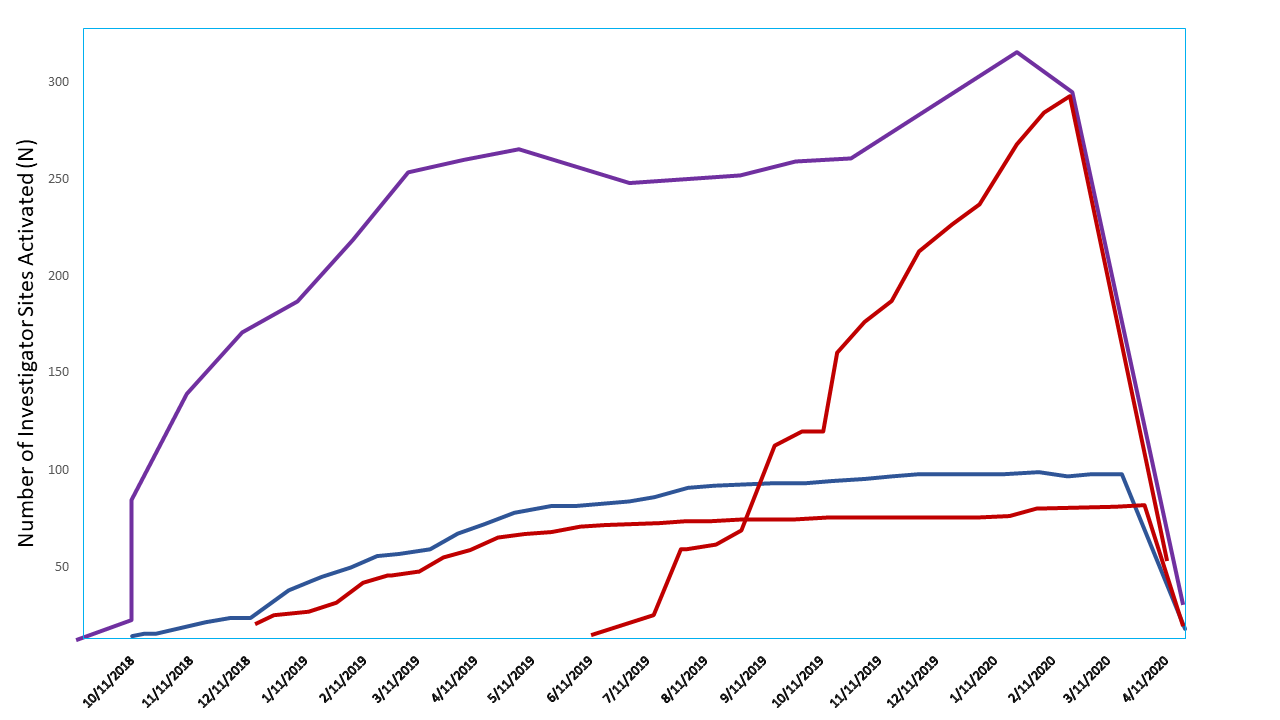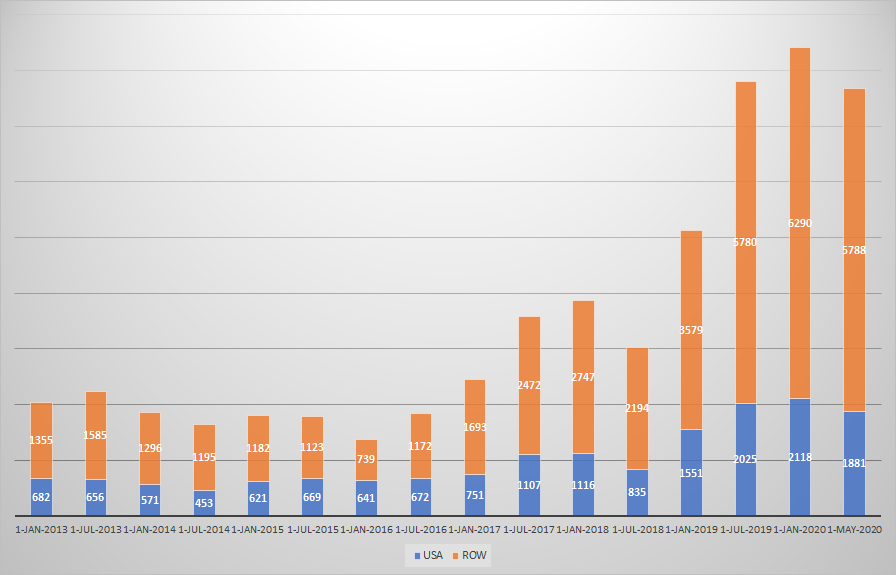Resurrecting Zombie Trials Will Be Another Consequence of COVID-19 Unless the Industry Acts Now
With the COVID-19 pandemic highlighting the existing issues with trial design and execution, the industry needs to address these problems now by becoming data-driven to ensure a long-lasting, positive impact on drug development and commercialization.
The impact of COVID-19 continues to be enormous; since the onset, billions of people have experienced some form of ‘lockdown’. With countries now starting to ease shelter-in-place conditions, the thoughts of many are slowly turning to getting back to ‘normal’, however long away that might be. The field of clinical trials is no exception and finds itself at a potential turning point. Although current circumstances are challenging, there is also now an opportunity, when ‘normal’ service resumes, to make long-lasting changes that benefit biopharmaceutical companies and trial sponsors, but most importantly, benefit patients. One of the key determinants in doing this will be an improved use of data, and the current hiatus is an opportunity to embrace this approach.
Behind raw numbers
Trial infrastructure has been hit hard by COVID-19; recent data from Phesi analyzing more than 300,000 global sites found a 38% increase in suspensions since the beginning of the year (Figure 1). The initial conclusions seem obvious-different trials for different indications, started at different times, sponsored by different companies, all put on hold as the pandemic began. But it is not quite this straightforward, nor is it entirely the fault of COVID-19. Undoubtedly, many trials have been suspended because of the pandemic, but there are some other longer-standing issues currently being masked by the virus.
One of these issues is that many trials are poorly designed from the outset so their execution is intrinsically flawed-and would be highly likely to fail or require rescue, even if COVID-19 had never happened. Our experience shows us that poorly executed site activation is one of the main drivers of slow patient enrollment behind the downward curve in trial activity, but this is currently being apportioned solely to the impact of COVID-19.
A second issue is competition between studies and sites; this has a significant impact on patient enrollment and now in many cases will be disguised as an outcome of COVID-19. Figure 2 highlights this problem; the number of recruiting sites in Crohn’s disease increased in the three years before COVID-19 from under 2,000 to more than 9,000-despite a limited patient population. The challenge is compounded by poor country allocation and investigator site selection, not by the pandemic. The reality is that at a future point, some of these programs will inevitably have to be terminated so the focus can be placed on those with the best chance of succeeding.
The issue then becomes deciding which sites should be terminated. And without a deep understanding of the data, it may be those chosen to restart will be the programs most likely to fail, rather than those with a higher probability of reaching patients and enhancing treatments. Indiscriminately suspending all trials then bringing them back to life without a true understanding of what might work, inevitably means some of the ‘zombie’ trials that are prone to failure will be resurrected.
Site (re)activation costs $30,000 at a conservative estimate and takes around 100 days. Data and tools exist that can improve the planning and execution of site activation-for example, helping to identify high-performing investigator sites or finding the most relevant CRO with a performance record in the indication under study. Sponsors must tap into this knowledge to be able to bring down site activation time and cost and minimize the risk that a trial will be unsuccessful or require a later rescue.
Becoming data-driven
We knowthat even without COVID-19, around 1/5 of trials fail, so the key to overcoming these hurdles is using data to optimize trial design and execution. This enables sponsors to identify all the variables associated with their study; analysis of the clinical site space for a therapeutic area-including geographical location, existing studies, and patient population-builds better protocols with a higher chance of success.
In addition, almost all Phase II and III trials will undergo one or more protocol amendments at some point, so it would be wise for sponsors to take advantage of the current slowdown to refine the design now using available data. It’s also likely that given the reduced level of in-person contact caused by social distancing, synthetic control arms will go from being a ‘fashionable’ term pre-COVID-19, to a fundamental part of any successful clinical development portfolio post-COVID-19, as the reliance on analytics and data (including real world data) grows.
The COVID-19 pandemic has caused significant global disruption, bringing the industry to a turning point by highlighting the existing issues with trial design and execution. The industry needs to address these problems now to ensure a long-lasting, positive impact on drug development and commercialization. Those companies who make the switch to become data-driven will better navigate the challenges ahead and will ultimately emerge stronger.
Dr. Gen Li is the President of Phesi

Figure 2. Patient recruitment for Crohn’s disease (Phesi, analysis conducted May 2020)

Behind the Buzz: Why Clinical Research Leaders Flock to SCOPE Summit
February 7th 2025In this episode, we meet with Micah Lieberman, Executive Conference Director for SCOPE Summit (Summit for Clinical Ops Executives) at Cambridge Innovation Institute. We will dive deep into the critical role of collaboration within the clinical research ecosystem. How do we bring together diverse stakeholders—sponsors, CROs, clinical trial tech innovators, suppliers, patients, sites, advocacy organizations, investors, and non-profits—to share best practices in trial design, program planning, innovation, and clinical operations? We’ll explore why it’s vital for thought leaders to step beyond their own organizations and learn from others, exchanging ideas that drive advancements in clinical research. Additionally, we’ll discuss the pivotal role of scientific conferences like SCOPE Summit in fostering these essential connections and collaborations, helping shape the future of clinical trials. Join us as we uncover how collective wisdom and cross-industry partnerships are transforming the landscape of clinical research.
Phase III Trial Data Show Subcutaneous Pembrolizumab as Noninferior to IV Keytruda
March 31st 2025Subcutaneous administration of pembrolizumab with chemotherapy demonstrated a nearly 50% reduction in patient chair and treatment room time while maintaining efficacy and safety endpoints compared to intravenous Keytruda.
Reaching Diverse Patient Populations With Personalized Treatment Methods
January 20th 2025Daejin Abidoye, head of solid tumors, oncology development, AbbVie, discusses a number of topics around diversity in clinical research including industry’s greatest challenges in reaching diverse patient populations, personalized treatment methods, recruitment strategies, and more.